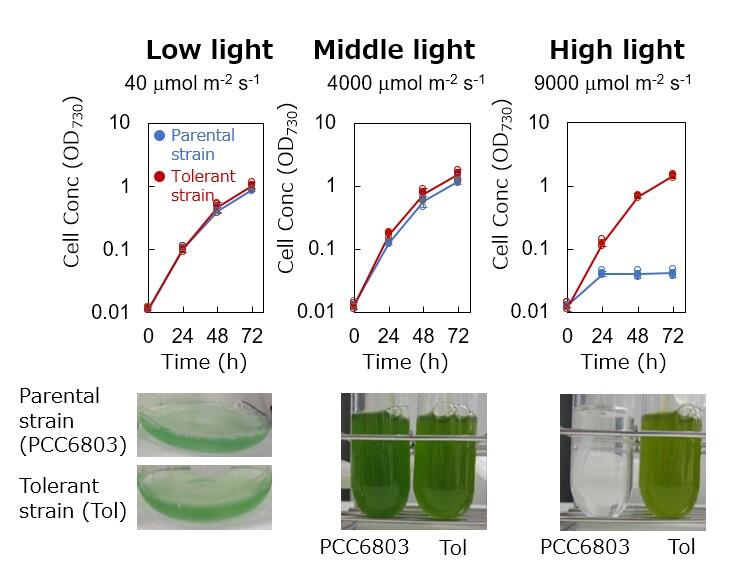Microalgae is expected to have a future role as a biomass. Essentially, the stronger the light, the more efficient it is at photosynthesis, but its efficiency is negatively impacted when the light is too harsh. A research group led by Professor Hiroshi Shimizu and Associate Professor Yoshihiro Toya of the Graduate School of Information Science and Technology, Osaka University, and Assistant Professor Seiji Akimoto of the Faculty of Science, Graduate School of Science, Kobe University, has obtained an ultra-strong light stress-resistant strain of cyanobacteria, microalgae through a directed evolution experiment. Then, in a world-first, it has discovered the key factor in the survival of these cells in an ultra-strong light stress environment. The findings were published in Communication Biology.
For the past 10 years, NICT has been carrying out research and development of technology to find answers to questions using searchable text on the Internet. Most existing search engines provide results of only about 10 or so documents at once that include the search keyword, and users need to read a large number of those documents to find a comprehensive answer to their question. In comparison, question response systems such as WISDOM X offer a list of straightforward answers to questions posed to them, enabling users to easily and quickly gain a comprehensive overview of the related information, and even to make valuable and unexpected discoveries.
Cyanobacteria is a model organism for photosynthesis, that uses energy via photosynthesis to be able to fix carbon dioxide and produce matter. They can produce various chemical compounds, including ethanol, n-butanol, isobutanol, isoprenol, PHB (plastic), lactic acid, succinic acid and itaconic acid (a polymer).
However, strong light such as the midsummer sun has been an obstacle to wider adoption because it damages the cyanobacteria cells, preventing their growth. Using the directed evolution method, the research group obtained an evolved strain capable of surviving under ultra-strong light stress by subculturing cells long periods while gradually increasing the strength of light they were exposed to.
Specifically, wild strains were cultivated under the stressful conditions of strong light (7000 microeinsteins). The stress-resistant strains were selected, cultured and then subcultured for further selection under stressful conditions of strong light again. Eventually, the team obtained strains evolved to survive in strong light of 9000 microeinsteins. The evolved strains did not demonstrate any decline in chlorophyll even under harsh light conditions, indicating that they had some mechanism within their cells able to handle strong light. Evaluating electron transport function through fluorescence attenuation analysis, assessment of photosynthesis photosystem II (PSII) electron transport did not find reduction of the decay rate in the evolved strains compared to that seen in the wild strains.
Gene expression assessment showed that the evolved strains expressed much more isiA under harsh light conditions than wild strains. CP43, which is encoded by isiA, is required for PSI supercomplex and efficient state transition, and has been reported to contribute to strong light-resistance. When wild strains' expression of isiA was boosted, their growth under strong light conditions was less inhibited, but their growth rate was still slower than that of the evolved strains.
The team then compared the wild strain and evolved strain genome base sequences and found two genetic mutations, slr1916 and hik26. By deleting slr1916 from the wild strains, they acquired resistance to strong light. The slr1916 change was a loss of function mutation. By introducing the hik26 mutation to the wild strains, they would acquire resistance to strong light.
Through this study, the team succeeded in giving cyanobacteria a strong light-resistance function with hik26 and slr1916 mutations and isiA overexpression. In the evolved strains, they confirmed the normal operation of photosystem electron transport under harsh light conditions.
By introducing these newly discovered genetic mutations to strains producing useful chemical substances like biofuels and plastics, the door would open to the effective use of surplus light energy previously wasted. Toya states that, "We will continue research into the application of these genetic mutations to strains producing useful chemical substances like biofuels and plastics."
This article has been translated by JST with permission from The Science News Ltd.(https://sci-news.co.jp/). Unauthorized reproduction of the article and photographs is prohibited.





